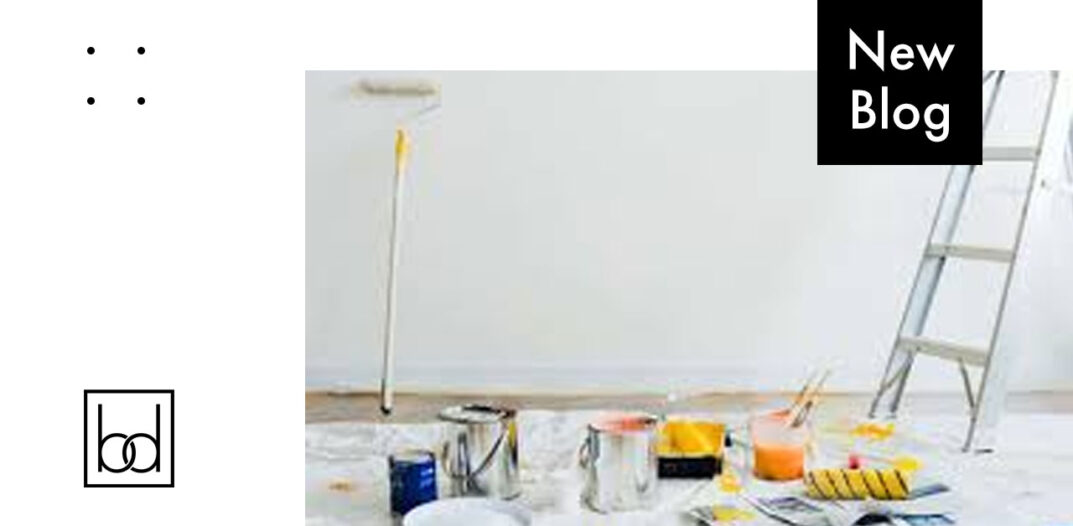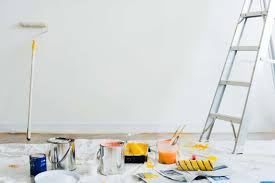
Is it time to update the look of your interior walls? We’ve all been spending much more time at home lately, and home improvement projects are booming in popularity. The walls we have been staring at for the past few months may be crying out for a fresh coat of paint. Whether you are planning to tackle a small DIY painting project yourself, or you’re about to hire a crew for a complete interior redo, you have quite a few decisions to make when it comes to the paint that will be used. You might think color is your only consideration, but choosing the right paint finish is just as important when it comes to achieving the right look for your home.
When you hear the term paint sheen, what this is actually referring to is how much light the paint reflects from it’s surface. High sheen paint reflects a great deal of light while paints without a sheen absorb light. The higher the sheen, the higher the shine, and the more durable the paint will be. Flat or matte paint has no sheen because it absorbs more light than it reflects. Semi-gloss and gloss paint reflects light, giving it a bright, shiny, and easy to clean finish.
How is this difference accomplished? It has to do with how the paint is made. Glossier paints have higher levels of resin and lower levels of pigmentation, while paints with a flatter finish have higher levels of pigmentation and lower levels of resin.
Now let’s take a closer look at the different types of finishes.
Matte or Flat Paint
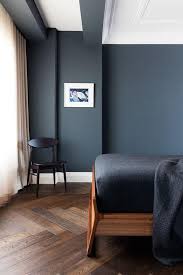
Using a flat or matte paint on your walls will result in a sheen-free look with a non-reflective, smooth appearance that hides imperfections like nail pops and patches. You may find that using matte paint is cheaper because it requires less coats than higher gloss paints to achieve a streamlined look. It is also easier to touch up later if minor damage occurs to a wall. You will often find flat paint used in new construction, on drywall, and on ceilings. On the exterior of your home, you’ll want to use a flat or matte paint on siding.
The main disadvantage to using matte or flat paint is the difficulty you’ll encounter with cleaning up fingerprints, scuffs and spills. If you do need to clean something off your flat or matte walls, you can try using a damp sponge, but that’s about it. Any type of cleanser or a too-saturated cloth will likely cause damage to the finish. For serious problems, your only option will be to paint over the scuffs and marks.
Eggshell Paint
Eggshell paint is incredibly popular, likely because it is the middle ground between flat paint and paint with a high gloss finish. When you use eggshell paint, you will end up with a low sheen finish, giving your walls a soft, smooth look, reminiscent of an actual eggshell. Eggshell paint is more washable than flatter sheens, and even resists scuffs. You still won’t be able to scrub your eggshell walls with a cleaning agent, but it is more cleanable than flat or matte paint. Again, extensive marks will require repainting rather than cleaning.
Satin Paint
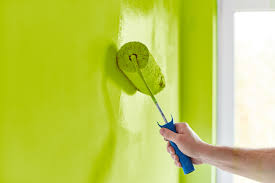
If you are looking for an elegant, pearl-like finish, satin paint is the sheen for you. It is often considered to be the most versatile of the finishes, and if you are looking to streamline a painting project and use the same finish in every room, satin is your best bet for a finish that will work relatively well in any room. Satin paint can even be used outdoors, as it resists mildew and fading and is much easier to clean that lower-gloss paints. Another ideal use for satin finish is the basement. When you have little or no natural light streaming into a room, satin paint will nicely reflect the limited light you have available.
Semi-Gloss Paint
Semi-gloss paint is highly reflective and gives rooms a smooth and sleek appearance. It resists moisture and is easy to clean, even if a mild cleanser is needed. This sounds great right? There are downsides to semi-gloss paint though. Due to its high sheen, semi-gloss will draw your attention to any blemish that may appear on your wall, such as a scuff or nail pop. Semi-gloss is the ideal paint sheen for crown molding, with it’s shiny appearance complementing a flatter paint nicely when paired together.
High- Gloss Paint

As the name would imply, high-gloss paint is the glossiest finish on the market, with a high sheen due to its highest level of reflected light. If you use high-gloss paint, your walls will take on a glass-like appearance, and is often used outdoors on shutters, doors and trim. You will need to use several coats of this glossy finish, and whatever you are painting will likely need a lot of prep work before the painting begins.
Which Paint Sheen Goes Where?
Is it possible to use any of these types of paint in any room throughout your home? Of course that is your choice, but depending on the sheen, it is not necessarily recommended. Some paint finishes are uniquely better-suited for high traffic areas, while others are best saved for trim or the exterior of your home. Here’s a room by room look at the best paint type for each location in your home.
Kitchen
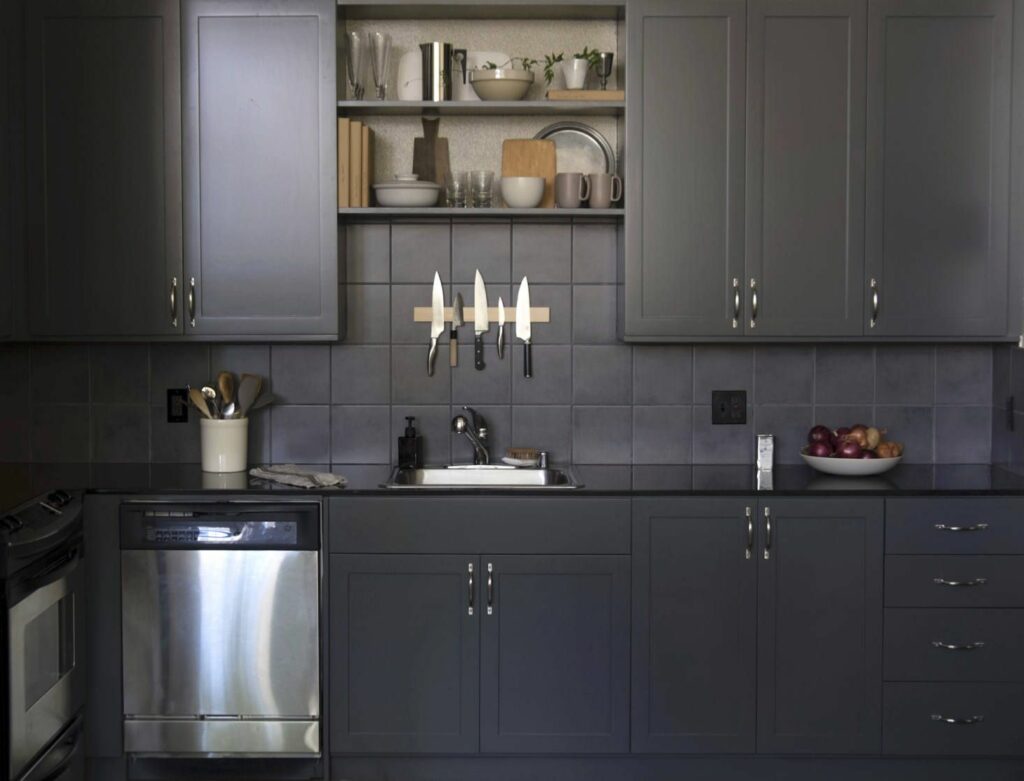
Your kitchen is likely the highest traffic room in your house, especially if you have hungry kids breezing in and out for snacks and drinks frequently. Add to this the likelihood of spills and messes occurring while cooking and you definitely want a durable and easy-to-clean paint for your kitchen. A high gloss or semi-gloss finish is the best choice for this type of room. You should avoid flat or matte paint in kitchens, due to the difficulties in cleaning walls should the need arise.
Family Room and Living Room
Your family room likely sees a lot of traffic, but hopefully it’s walls will not require frequent cleaning. This means eggshell paint is a great choice for such a gathering type room. You can wash off soil and dirt if necessary, but the finish won’t show imperfections as easily as with a higher sheen paint, which is important for those of us who are frequent hosts to guests in such common areas.
Dining Room
A formal dining room is a flexible painting location, and the finish you choose depends on how often you host formal dinners and gatherings. If you use your dining room frequently, consider a semi-gloss or satin sheen so that you can take advantage of the easy cleaning benefits of a higher sheen. On the other hand, if your dining room is rarely used and mostly admired from a foyer, frequent cleanings may not be necessary, so you can go with a flat or matte paint. Of course, it is also always OK to find the middle ground by choosing eggshell for your dining room.
Guest Rooms and Adult Bedrooms

If you love the look of flat/matte paint but are unsure where to use it, you’re not alone. Many of us have been advised not to use flat paint because it is so difficult to keep clean. However, you can feel confident using this finish in low traffic areas where cleaning is not a major concern. A guest bedroom that is only used occasionally is an ideal candidate for flat/matte paint, and even your own bedroom would be a feasible location for flat paint, especially if you do not need your bedroom to double as a home office or virtual schooling location.
Kid’s Bedrooms
It’s only natural to assume you will be cleaning the walls in a children’s bedroom more so than in that of an adult. Because of this need for regular cleaning, satin paint is highly recommended as a paint finish to be used in a kid’s bedroom. You may need to do additional prep work before you paint, but the you will enjoy the payoff the first time crayon marks or furniture scuffs need to be removed.
Bathrooms
Rooms that are exposed to moisture do best with a satin paint finish. When walls are painted using a satin finish, they are easy to clean, even if a cleanser or saturated cloth are needed. Satin paint is resistant to mildew, so whether the room is exposed to excess moisture from daily shower use or from cleaning, you can expect to see little to no damage to your paint.
Should you Choose Latex or Oil Based Paint?
Another consideration when it comes to paint is whether you should use latex or oil based paint. Latex paint tends to be best at avoiding cracks and chips, and they also are resistant to the fading and yellowing that sometimes occurs in areas exposed to large amounts of sunlight. This type of paint emits less odor as it goes on the wall, and small spills can be easily cleaned up from non-carpet flooring using only water. Latex paint also takes a much shorter time to try than it’s oil-based counterpart. What is the disadvantage to latex paint you may ask? You have to be able and willing to work fast when you are using it. Latex paint will start to set in an open can or roller pan, so it must be resealed quickly.
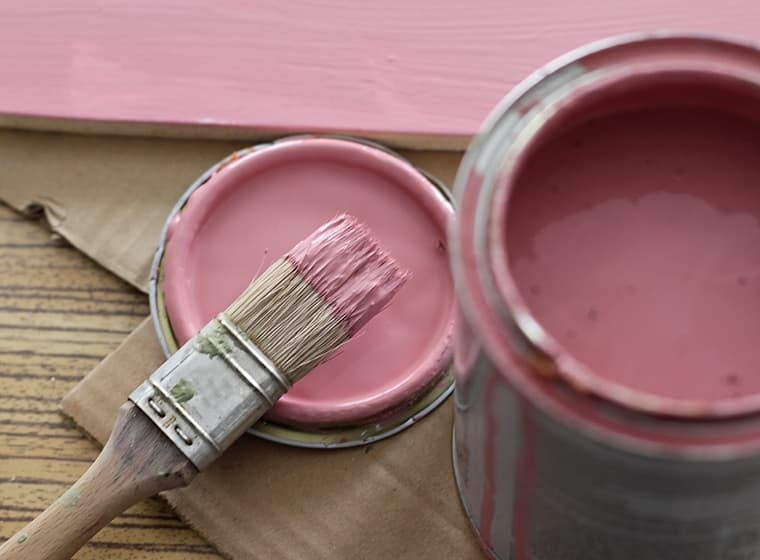
Oil based paints also have several clear advantages over latex. If you want to be “one and done” with only one coat of paint, oil based will help you achieve this goal. It is also better at adhering to difficult surfaces, such as those not properly cleaned and primed. You can take your time while painting with oil based paint, as it does not set as quickly as latex. Once dry, oil based paint will resist moisture and is quite durable. However, it has a strong odor and is subject to yellowing on walls exposed to direct sunlight.

